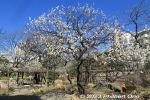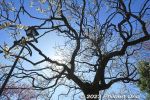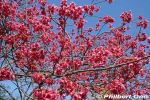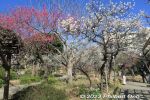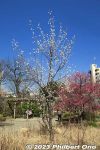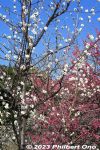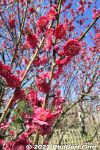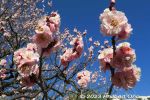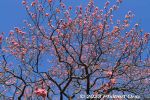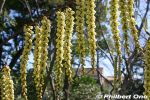 Image search results - "kojima" Image search results - "kojima" |

Seto Ohashi Bridge under construction in 1986.
|
|
|

建設中の瀬戸大橋
|
|
|
|
|
|

Kurashiki end
|
|

The double decker still not installed.
|
|

Seto Ohashi Bridge under construction in 1986, Kurashiki.
|
|

Seto Ohashi Bridge under construction in 1986, Kurashiki. 瀬戸大橋
|
|
|

Shimotsui Seto Bridge to Hitsuishijima island
|
|

Start of the double decker from Kurashiki.
|
|

Start of the double decker bridge.
|
|
|
|

Boat cruise for seeing the bridge.
|
|
|

Passed under the bridge.
|
|
|
|
|

Shimotsui Station
|
|

Operated by the Tokyo government, Mukojima Hyakkaen Garden is a medium-size Japanese garden in a quiet residential area in eastern Tokyo (Sumida Ward) not far from Tokyo Skytree.
|
|

Entrance to Mukojima Hyakkaen Garden. Open 9:00 a.m. to 5:00 p.m. (enter by 4:30 p.m.), Closed: December 29 to January 3. Garden admission is only ¥150 for adults. For age 65 and older, only ¥70. What a bargain.
|
|

About Mukojima Hyakkaen Garden.
|
|
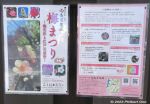
Event schedule for Mukojima Hyakkaen's Ume Matsuri (Plum Blossom Festival) from Feb. 11 to March 5, 2023. A few events and entertainment are held on the weekends during this period.
|
|

About Mukojima Hyakkaen Garden in Japanese.
|
|

Poetry monument as you enter the garden. This one is by famous Haiku poet Matsuo Basho. About the coming of spring. 松尾芭蕉の句碑
|
|

The garden has 29 monuments for poetry and poets. 千寿庵益賀の句碑
|
|

After paying admission, go through this Garden Gate to enter the garden. 庭門
|
|

Flowers currently in bloom in the garden.
|
|

This was late Feb. when the plum blossoms were in full bloom.
|
|

Mukojima Hyakkaen Garden with ume plum blossoms in Sumida-ku, Tokyo.
|
|

Mukojima Hyakkaen Garden was destroyed by the March 1945 firebombing of Tokyo, but was rebuilt and reopened in 1949.
|
|

Small hut or gazebo. あずまや
|
|
|
|
|
|
|
|
|
|
|

Mukojima Hyakkaen Garden has some trellis where you can sit and admire the flowers.
|
|

Mukojima Hyakkaen Garden plum blossoms with Tokyo Skytree in the background.
|
|
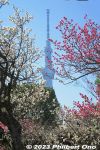
Plum blossoms in Mukojima Hyakkaen Garden and Tokyo Skytree.
|
|
|
|
|
|
|
|
|

Mukojima Hyakkaen Garden ume plum blossoms.
|
|
|
|
|
|
|
|
|
|
|
|
|
|
|
|
|
|
|
|
|
|
|
|
|
|
|

Pink plum blossoms.
|
|
|

Mukojima Hyakkaen Garden's major feature is this Japanese bush clover (hagi) tunnel.
|
|

Mukojima Hyakkaen Garden's Japanese bush clover (hagi) tunnel. Need to see it in early September. Otherwise, it's bare.
|
|
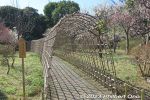
Japanese bush clover (hagi) tunnel is flanked by plum trees. ハギのトンネル
|
|
|

Japanese bush clover (hagi) tunnel.
|
|

Japanese bush clover (hagi) tunnel.
|
|
|
|
|
|

Japanese bush clover (hagi) tunnel.
|
|

Japanese bush clover (hagi) tunnel.
|
|
|

This is a pretty white plum blossom tree. Species name is "Shirokaga."
|
|

Species name is "Shirokaga."
|
|

White plum blossoms named "Shirokaga."
|
|
|
|
|
|
|
|

Pine tree.
|
|
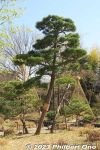
Pine tree.
|
|

Small bamboo grove.
|
|
|
|

Pine tree at Mukojima with yukitsuri ropes for protection against snow.
|
|

Pine tree at Mukojima Hyakkaen Garden.
|
|
|
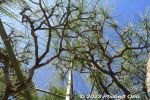
Pine tree at Mukojima Hyakkaen Garden, bottom view.
|
|
|

Pond bridge
|
|

Garden pond is designed as a marsh.
|
|

Garden pond is slender.
|
|

Pond has koi fish.
|
|

Plum blossoms in front of Onari-zashiki 御成座敷.
|
|
|
|
|
|
|

These flowers were in bloom in late March.
|
|
|

These flowers were in bloom in late March.
|
|
|
|

These flowers were in bloom in late March.
|
|
|
|
|
|
|
|

Baido-sui well 梅洞水
|
|

Small gift shop and cafe with outdoor seating. 売店
|
|

The garden has 29 monuments like this dedicated to poets or literature.
|
|

寶屋月彦の句碑
|
|
|
|
|
|
|

Mukojima Hyakkaen is near Higashi-Mukojima Station on the Tobu Skytree Line or Keisei Hikifune Station on Keisei Oshiage Line.Easiest way is to take the Nippori-bound bus #22 (里22) from JR Kameido Station (bus stop 6). Get off at Hyakkaen-mae.
|
|

On the Nippori-bound bus #22 (里22) from JR Kameido Station, get off here at Hyakkaen-mae bus stop.
|
|

From the bus stop, follow the sign to walk to the garden's front entrance. Walk around the garden fence.
|
|

Turn right and go straight. There will be a small playground.
|
|

Near Mukojima Hyakkaen Garden are seven shrines for the Sumidagawa Seven Gods of Good Fortune (Sumidagawa Shichi-fukujin 隅田川七福神めぐり). This is a map of the seven shrines.
|
|

Near Mukojima Garden is Shirahige Shrine in Higashi Mukojima, Sumida-ku, Tokyo. Dedicated to the God of Longevity, it's one of the Sumidagawa Seven Gods of Good Fortune. 白鬚神社
|
|
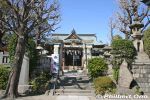
Shirahige Shrine in Higashi Mukojima, Sumida-ku, Tokyo. "Shirahige" literally means "white beard," a sign of old age and longevity. The shrine worships Sarutahiko Ōkami for strength and guidance.
|
|

Shirahige Shrine in Higashi Mukojima, Sumida-ku, Tokyo is also a branch shrine of Shirahige Shrine in Takashima, Shiga Prefecture. 白鬚神社
|
|

Also near Mukojima Hyakkaen Garden is Shirahige Bridge crossing Sumida River to Taito Ward (left side) and Arakawa Ward (right side). The road leads to Minowa and Minami-Senju.
|
|
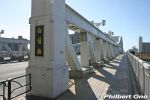
Built in 1931, Shirahige Bridge was named after nearby Shirahige Shrine. Length is 167.6 meters. Amazing that it survived World War II. 白鬚橋
|
|

Shirahige Bridge over Sumida River is on the border of three wards: Sumida, Taito, and Arakawa. The original bridge was wooden built in 1914. It was a toll bridge, but didn't do well business wise due to watashi-bune commuter boats in the same area.
|
|

Sumida River from Shirahige Bridge.
|
|

Emperor Meiji visited here too.
|
|
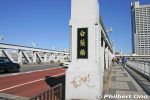
Shirahige Bridge on the Taito Ward end.
|
|
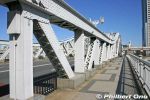
Shirahige Bridge over Sumida River. The original wooden bridge survived the 1923 Kanto earthquake, but Tokyo government bought the bridge in 1925 and rebuilt it in 1931.
|
|

Shirahige Bridge looks the same since 1931.
|
|

Shirahige Bridge
|
|

Sumida River as seen from Shirahige Bridge.
|
|
|
|
|
|
|



































